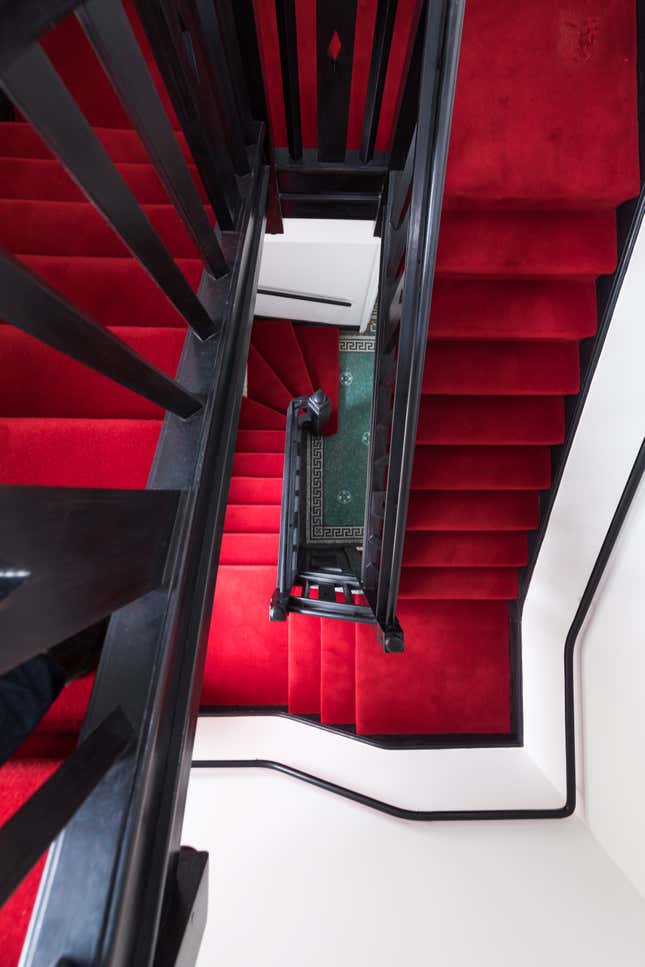Take a scroll through the top cities on Nomad List—the internet’s foremost authority on trending digital nomad hotspots—and you’re likely to find that New York, San Francisco, and London don’t even crack the top 10.
That’s because the self-styled digital nomads who take part in the location-independent work movement, which began gaining traction five or so years ago, usually do so to get away from expensive cities. If your boss or clients don’t care where you work from, the logic goes, why waste all your income on developed world rent? Instead, nomads have typically sought to gain freedom—and relative wealth—by heading overseas.
That’s why recently, when a slew of “co-living” startups began cropping up in cities and neighborhoods with the types of astronomical rent prices that sparked the nomad movement in the first place, I was curious. Interestingly, these spaces are not positioning themselves as part of the digital nomad trend, but rather, an offshoot of it. It’s digital nomadism—minus the cheap rent and so-called “tech bro” stereotype. The premium nomads have arrived.
One example I visited recently is Roam. After opening its first location in Ubud, Bali (a popular digital nomad hotspot) in 2016, it has since expanded to London, Tokyo, and Miami, with further locations planned for San Francisco and New York. A recent Tuesday morning visit to its London location landed me Chelsea, a neighborhood that easily qualifies as London’s poshest and most affluent. A step inside revealed chic, minimalist rooms and common areas—the WeWork aesthetic comes to mind—and an attractive forty-something woman sipping a green juice in a chef’s kitchen while tapping away at a laptop. At the time, 32 of the 34 rooms were booked.

Roam calls its guests “members,” because many of them are not one-time visitors like you’d have in a hotel, but rather people who regularly stay at various Roam locations as they go about their global business. The minimum stay is seven days with a base rate of $500 (the London location is $800 per week), and a members get a discount for longer booking. A 30-night stay in London would average out at $106 per night. While that price may be comparable with renting an Airbnb room in a shared flat, one would struggle to find any hotel at that price point in Greater London.
Many members don’t have fixed addresses, and spend their life permanently on the road. Others have homes but also the option to work anywhere, and they use Roam as a periodic crash-pad when they are in town. They’re not your typical business traveler, but they’re not the type you’d find roughing it in a budget Airbnb, either. The average age of Roam’s 2,000 members is 38.
Founder Bruno Haid says Roam’s approach is to open locations in what he describes as “alpha cities,” or “global hubs that people need to spend time in anyway,” rather than places to escape the Western grind. He says that though the concept was inspired by the growing awareness—and corporate acceptance—of the digital nomad lifestyle, the company itself avoids the term and its members tend not to identify as such.
“On the one hand [digital nomadism] definitely was a trail-blazing movement that made the concept of location independence possible,” Haid says. “But at the same time there is an association [of digital nomads] with a 25-year-old white dude sitting on a beach with a MacBook and not noticing the environment around them. So we’re trying to shy away from the negative perception that a lot of people have.”
While Haid seems to hold a negative stereotype of digital nomads as common knowledge, not everyone agrees. Lucie Greene is Worldwide Director of the Innovation Group, a consultancy, and has studied the trend as part of the “The New Adulthood” report. She characterizes digital nomadism not as being about privilege or entitlement, but rather as reflective of the economic constraints and different aspirations of modern adulthood. The “reinvention” of second-tier cities such as Detroit and Austin in the US and Margate and Bristol in the UK is a manifestation of the same impulse many people have to flee expensive urban life, she argues.
“I don’t think of this as trustafarians—I associate it with something much more modern,” Greene said. “Often it is actually about thrift. As prices in capital cities like New York and London become even more expensive, you’re seeing people who want to launch a business or be entrepreneurial are moving and, in the process, ‘reinventing’ second cities in other capitals in the world.”
That the once-fringe model of digital nomadism has become professionally acceptable enough to attract a newer, older demographic is interesting—even if those catering to these premium nomads don’t identify with it. Haid explains the London location is more likely to attract a 60-something human rights lawyer from India who splits her time between three continents than a scrappy, no-strings-attached millennial entrepreneur.
Pieter Levels is a Dutch developer and influential digital nomad who has created widely-used online tools for the location-independent life, including the aforementioned Nomad List. He thinks that models like Roam will have a hard time being sustainable because the market of premium nomads is currently too niche. Most independent nomads who aren’t relying on co-living spaces—but rather doing short-term rentals from locals or using Airbnb—are still very much motivated by fleeing “alpha cities” and the expensive, consumption-heavy lives that comes with them.

“I have a hard time believing the market of premium nomads exists yet. But it will at some point,” Levels said. “The economics make sense if these co-living spaces can create a community like co-working spaces have; that will be a real reason to book a co-living space over an Airbnb, but it’s still very early days.”
Of course, people like Haid speak convincingly about this community aspect as being central to their offering, using phrases like “communal shared infrastructure,” “supporting random interactions,” and “built for introverts.” Other than the lower price, this aspect is ostensibly what separates concepts like Roam from a standard-issue business hotel.
Another similar concept is called Outsite, which has locations in places including San Diego, Venice Beach, Santa Cruz, Hawaii, and New York City, and plans to open 10 more in the US next year. Its founder, Emmanuel Guisset, says that he sees the offering as something between an Airbnb and a hotel, with a professional social component as the main selling point.
“People are getting tired of Airbnb because it’s really a roll of the dice—they’re looking for something more, and hotels are simply too expensive for long stays,” Guisset said. Most of Outsite’s guests are not self-described digital nomads, according to Guisset, and there are scant mentions of the term in its website copy. Its New York locations charge $120 per night, and a discounted month-long stay costs $2,200.
It seems reasonable that the market is ripe for these kinds of grown-up hostels: a place where professional adults can travel and meet like-minded people far beyond the period of one’s twenties when it’s socially acceptable to do that. However, the business model is unclear. The sustainability of offering quasi-luxury accommodation in expensive real estate markets complete with amenities and staff—all while charging remarkably less than a comparable hotel—seems dubious at best. Unlike the sums raised by that other coliving and coworking behemoth, WeWork, Roam and Outsite have raised comparatively modest sums of investment ($3.4 million and $1.5 million respectively).
But if they can hack it—and perhaps, like WeWork, convince future investors that “community” makes these spaces more than just a subsidized hotel—this could indeed be a new model for nomads who aren’t interested in roughing it. Premium nomads are likely here to stay. It’s just a matter of where they’re going to sleep.
